Quantum Computing (QC) holds the potential to tackle complex problems that are challenging for classical computers, even supercomputers. As a groundbreaking computing paradigm, QC can revolutionize fields such as cryptography, artificial intelligence, drug discovery, and Earth Observation. In this tutorial, we will examine the fundamentals of QC and explore the most promising algorithms for Earth Observation applications, specifically designed for Noisy Intermediate Scale Quantum (NISQ) devices. Furthermore, we will assess the current landscape of quantum hardware and software, delving into the European ecosystem of quantum computing projects. By showcasing key players and significant advancements in the field, this tutorial will provide valuable insights into the burgeoning world of quantum computing and its implications for Earth Observation.
Presenters
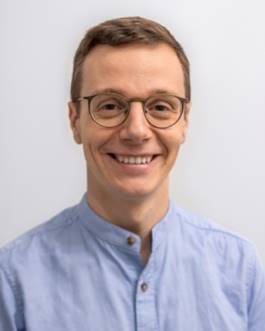
Gabriele Cavallaro received his B.Sc. and M.Sc. degrees in Telecommunications Engineering from the University of Trento, Italy, in 2011 and 2013, respectively, and a Ph.D. degree in Electrical and Computer Engineering from the University of Iceland, Iceland, in 2016. From 2016 to 2021, he served as the deputy head of the "High Productivity Data Processing" (HPDP) research group at the Jülich Supercomputing Centre (JSC), Forschungszentrum Jülich, Germany. From 2019 to 2021, he delivered lectures on scalable machine learning for remote sensing big data at the Institute of Geodesy and Geoinformation, University of Bonn, Germany. Since 2022, he has been the Head of the "AI and ML for Remote Sensing" Simulation and Data Lab at JSC and an Adjunct Associate Professor at the School of Natural Sciences and Engineering, University of Iceland, Iceland. He also serves as the Chair of the High-Performance and Disruptive Computing in Remote Sensing (HDCRS) Working Group of the IEEE GRSS ESI Technical Committee and as a Visiting Professor at the Φ-Lab of the European Space Agency (ESA) in the context of the Quantum Computing for Earth Observation (QC4EO) initiative. Since October 2022, he has been an Associate Editor of the IEEE Transactions on Image Processing (TIP). Additionally, he serves on the scientific committees of several international conferences and is a referee for numerous international journals. He was the recipient of the IEEE GRSS Third Prize in the Student Paper Competition of the IEEE International Geoscience and Remote Sensing Symposium (IGARSS) 2015 (Milan, Italy). His research interests include remote sensing data processing with parallel machine learning algorithms that scale on distributed computing systems and cutting-edge computing technologies, such as quantum computers.
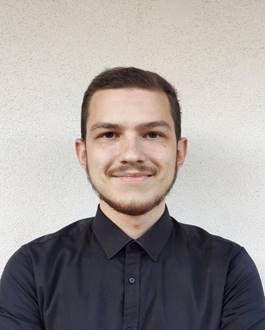
Amer Delilbasic (Student Member, IEEE) received the B.Sc. and M.Sc. degrees in information and communication engineering from the University of Trento in 2019 and 2021, respectively. He is member of the “AI and ML for Remote Sensing” Simulation and Data Lab at Jülich Supercomputing Centre (JSC), Forschungszentrum Jülich, Germany. He is currently pursuing the Ph.D. degree in computational engineering at the University of Iceland. He is an external researcher at Φ-lab, European Space Agency, Frascati, Italy. His research interest is mainly in machine learning methods for remote sensing applications, with a particular focus on Quantum Computing (QC) and High-Performance Computing (HPC).
In a first step, the purpose of this tutorial aims to describe the main optical and radiative processes in remote sensing in the range 0.4-12 µm. This includes some introduction on the optical properties of material (reflectance, emissivity) and the atmosphere, land surface temperature, the radiative transfer in the Earth atmosphere system, and finally on the radiative preprocessing (atmosphere correction, temperature / emissivity separation) to retrieve the surface properties. A general overview of the different classes of sensors will then be introduced. Then, applications on pollution will be presented including gas and aerosols plumes characterizations, hydrocarbon pollution at soil and sea surface, hydrocarbon and metal trace in-depth detection using their indirect impact on the vegetation, liquid pollution.
Presenter
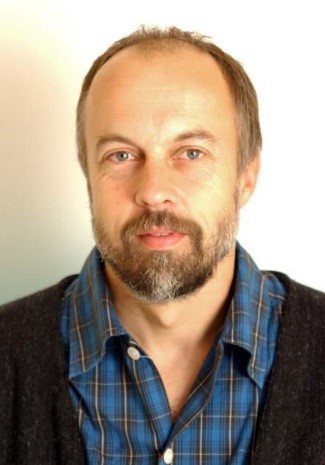
Xavier Briottet received his PhD degree in Electonics from the “Ecole Nationale Supérieure de l'Aéronautique et de l'Espace” (Toulouse, France) in 1986 and his "Habilitation à Diriger les Recherches" in 1999 from Paul Sabatier University, Toulouse. In 1987, he became an assistant professor in signal and image processing at the “Ecole Supérieure d'Electricité”. He integrated ONERA in 1988. He is now Director of Research at ONERA and acts as advisor of active and passive remote sensing in the optic department (Toulouse, France). His main research interests are on 3D radiative transfer in urban area, shadow detection, atmosphere, unmixing in the reflective and thermal domain, using high spatial hyperspectral imagery and 3D lidar. He is PI of a French hyperspectral space mission and member of the mission group for a multispectral thermal infrared space borne payload (TRISHNA). He is also member of several French committees, and reviewer of Switzerland, Belgium and Canadian projects.
He contributes to chapters of 12 collective books, published more than 100 publications in PEER review and around 200 presentations in colloquium.
In the framework of Earth observation, an increasing number of hyperspectral data acquisition systems are currently used. They yield new challenges in terms of data processing methods. In particular, the price to pay for their improved spectral resolution is often a lower spatial resolution, as compared with that of multispectral or panchromatic instruments. This yields an increased number of mixed pixels, i.e. pixels which involve several pure materials. A major hyperspectral data processing task is therefore unsupervised unmixing, which aims at decomposing each observed pixel spectrum so as to estimate all pure material spectra and their associated weights, called abundance fractions, that are defined by the fraction of area covered by each pure material in the considered pixel. This unmixing task will be addressed in detail in this talk. We will start from basic configurations and we will then consider various extensions, including spectral variability, nonlinear mixing and semi-supervised configurations. Another important task consists of fusing hyperspectral data with multispectral or panchromatic ones, so as to create an image which combines the higher spectral resolution of the former type of data with the higher spatial resolution of the latter. A class of methods used to this end consists of unmixing all considered types of data and then recombining their components of interest. In this talk, this class of methods will be discussed, as an extension of the unmixing methods to be presented first. Beyond these algorithmic topics, we will also detail various applications of all these methods to different aspects of Earth observation. This will especially include urban scene analysis (e.g. to detect photovoltaic panels and to estimate their surfaces), coastal water remote sensing (to analyze the seabed composition, despite complex physical phenomena, such as the influence of the light due to adjacent pixels) or mineral detection and mapping in natural areas.
Presenter
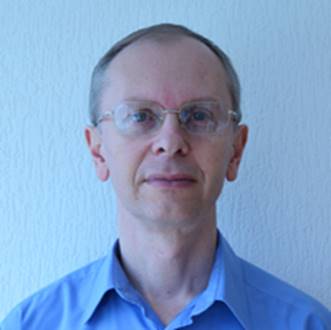
Yannick Deville was born in Lyon, France, in 1964. He graduated from the Ecole Nationale Supérieure des Télécommunications de Bretagne (Brest, France) in 1986. He received the D.E.A and Ph.D. degrees, both in Microelectronics, from the University of Grenoble (France), in 1986 and 1989 respectively. From 1986 to 1997, he was a Research Scientist at Philips Research Labs (Limeil, France). His investigations during that period concerned various fields, including GaAs integrated microwave RC active filters, VLSI cache memory architectures and replacement algorithms, neural network algorithms and applications, and nonlinear systems. Since 1997, he has been a Professor at the University of Toulouse (France). From 1997 to 2004, he was with the Acoustics lab of that University. Since 2004, he has been with the Astrophysics lab in Toulouse, which is part of the University, of the French National Center for Scientific Research (CNRS) and of the Midi-Pyrénées Observatory. Yannick Deville’s current major research interests include signal and image processing (especially hyperspectral data), higher-order statistics, time-frequency analysis, neural networks, quantum entanglement phenomena, and especially Blind Source Separation and Blind Identification methods (including Independent Component Analysis, Sparse Component Analysis and Nonnegative Matrix Factorization) and their applications to Remote Sensing, Astrophysics and Quantum Information Processing (Blind Quantum Source Separation and Blind Quantum Process Tomography).
Light reflected or emitted from a natural surface contains material-characteristic, spectral signatures. Spectral imaging sensors can capture this information in data rasters containing hundreds of discrete spectral bands. The resulting spectral data cube can be analyzed to create detailed maps of the surfaces’ material composition. Spectral imaging is experiencing rapid transformation, mostly due to the ongoing miniaturization of sensors, the boost in computer processing power and the need for fast and non-invasive characterization technologies. The technology is versatile with regards to application type and scale, and can be applied in controlled environments as well as under sunlight illumination. Spectral imaging already supports a variety of application fields in Earth observation and industry, such as agriculture, geoscience, urban planning, recycling and environmental monitoring, ranging from global down to sample scale. We present recent developments in machine learning to process hyperspectral data in an efficient and rapid way. We will demonstrate the potential of hyperspectral imaging and machine learning on geological examples. We will demonstrate that a fully 3D approach benefits the accurate mapping of complex geological surfaces such as outcrops, mine faces, and mine wastes. Thus, mineral resources mapping is not only safer and faster, it is moreover more socially acceptable and more efficient.
Presenter
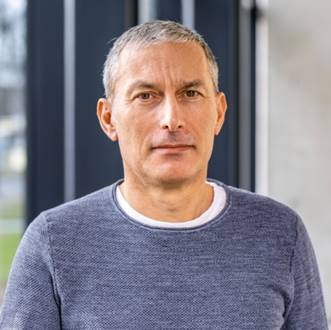
Richard Gloaguen, Head of the Exploration Department at the Helmholtz-Institute Freiberg for Resource Technology. He received the Ph.D. degree “Doctor Communitatis Europae” in marine geosciences from the University of Western Brittany, Brest, France, in collaboration with the Royal Holloway University of London, U.K., and Göttingen University, Germany, in 2000. He was a Marie Curie Post-Doctoral Research Associate at the Royal Holloway University of London from 2000 to 2003. He led the Remote Sensing Group at University Bergakademie Freiberg, Freiberg, Germany, from 2003 to 2013. Since 2013, he has been leading the division “Exploration Technology” at the Helmholtz-Institute Freiberg for Resource Technology, Freiberg. He is currently involved in UAV-based multisource imaging, laser-induced fluorescence, and non-invasive exploration. His research interests focus on multisource and multiscale remote sensing integration using computer vision and machine learning.